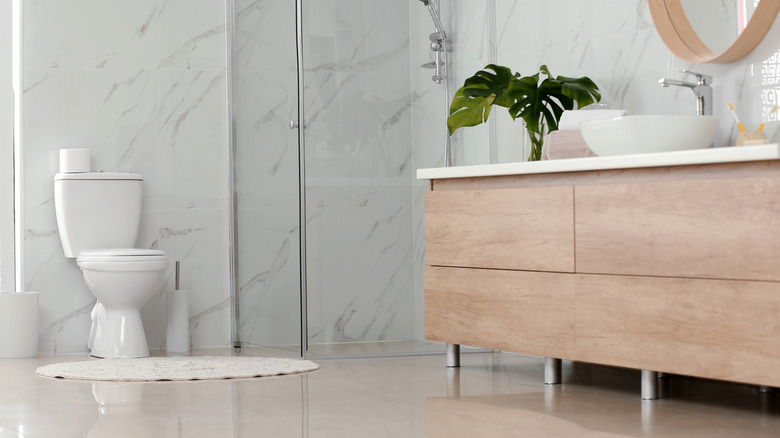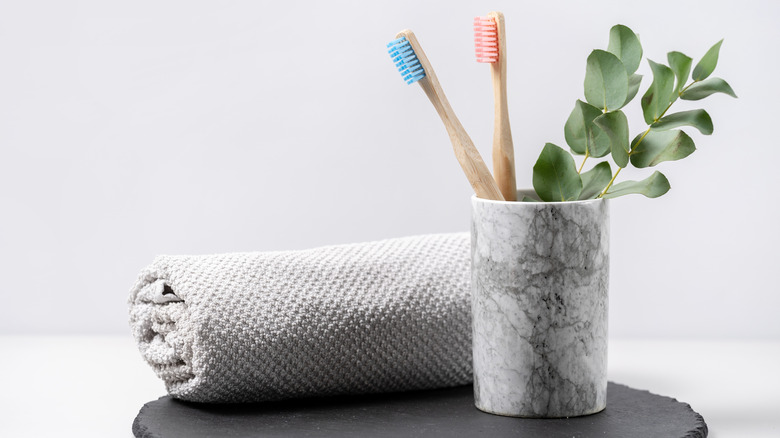The Germiest Place In Your Bathroom Might Surprise You
There's no sugarcoating it: The bathroom is a pretty gross place. Some lavatories are certainly more pristine than others, but the very nature of what goes on in the room makes a bit of yuck factor unavoidable. Other factors come into play, too, since many bathrooms are warm and damp, without very good airflow. Bacteria and germs thrive in these settings because they love moist, dark environments. A 2011 study by NSF International swabbed common household surfaces to test the levels of coliform bacteria, which is a family of bacteria that comprises the likes of E. coli and salmonella. Presence of the bacteria reflects potential fecal contamination. Surprisingly, the bathroom wasn't actually the dirtiest area in most homes, per the study. Instead, the kitchen took that title, as it's full of shockingly germy items.
Don't be fooled, though. The bathroom still has plenty of bacteria-covered surfaces. While it's great to be diligent about cleaning your toilet thoroughly, you may be concentrating your time and effort in the wrong place. Prepare to be surprised, because the germiest place in the bathroom is not the toilet seat.
If it's not the toilet, what's the germiest bathroom spot?
You try your best to listen to the dentist and brush your teeth twice a day to keep those pearly whites gleaming. Every time you drop the brush back into the toothbrush holder, however, you're actually immersing it into the germiest place in the whole bathroom. Yep, that inconspicuous little cup is actually a hotbed of grossness. The NSF's 2011 Study found that 64% of toothbrush holders had mold and yeast, compared to only 27% of toilet seats. Continuing with the cringe-worthy findings, coliform bacteria was found in 27% of the holders, with staph bacteria coming in at 14%.
There are a couple things you can do to combat the germs in your toothbrush holder. First, always make sure you're flushing the toilet with the lid closed. Microscopic bacteria will spray out of the toilet with each flush if you leave the lid up. Next, Cheatsheet.com suggests buying a holder that's dishwasher-safe and running it through on the sanitize cycle once or twice per week. If you have one already that you love but it isn't dishwasher-safe, be sure to hand-wash it in hot, soapy water. If you've been sick, toss your toothbrush, and replace it with a new one. Another good habit to keep bathroom bacteria at bay? Stash a tub of disinfectant wipes nearby, and wipe down surfaces at the end of each day.


